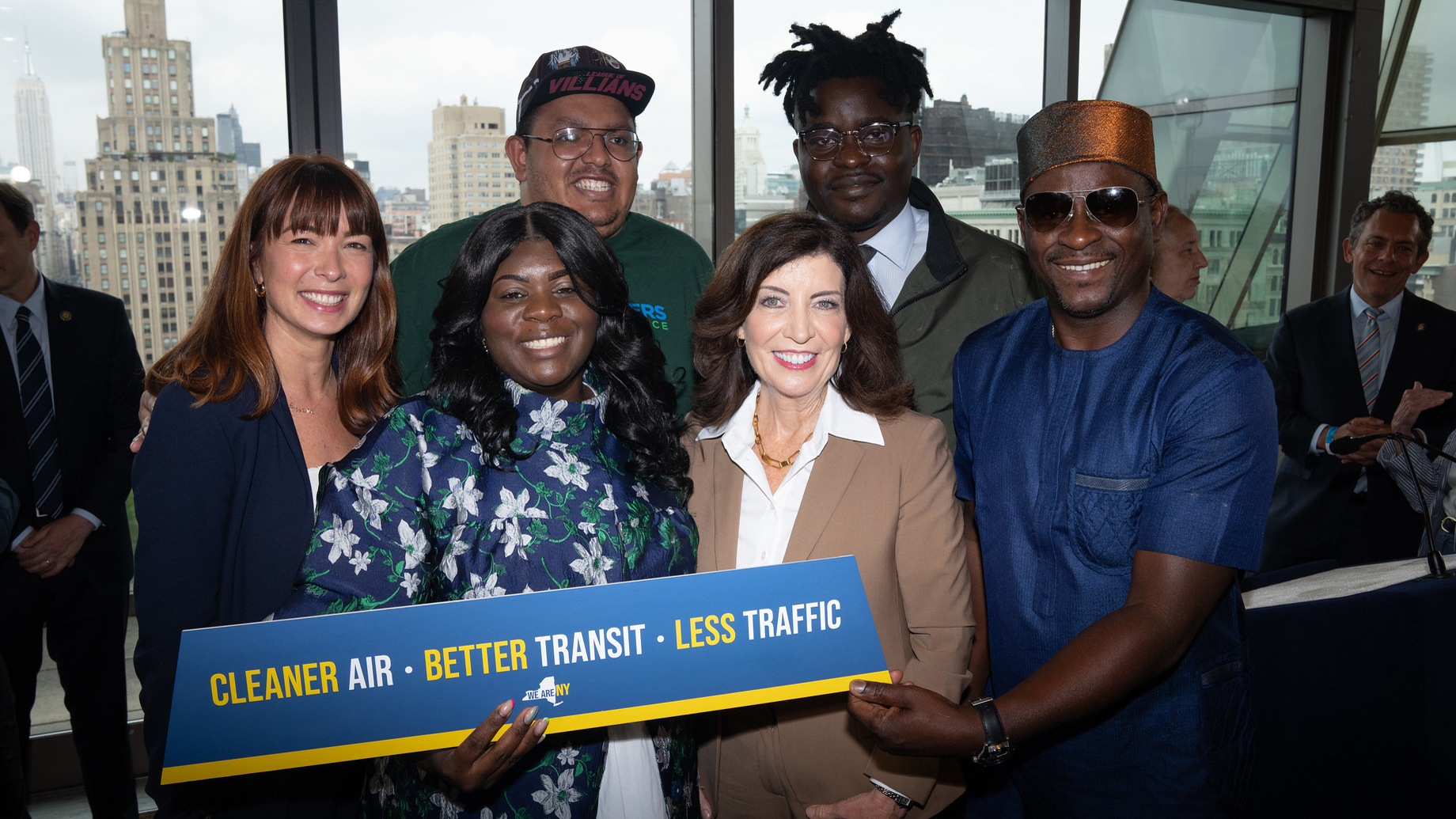Sunday, June 30 was supposed to be a historic day. After 17 years of debate, study, and public review, the nation’s first congestion pricing scheme was to go online at midnight in New York City. But without warning, 25 days before launch, Governor Hochul pulled the plug, indefinitely pausing the program to appease suburban voters.
One cannot overstate how disastrous the outcomes of this reversal will be: at least $16.5 billion worth of the MTA’s capital projects deferred, 100,000 jobs threatened, a continuation of the worst (and still worsening) congestion in the world, which costs the city $20 billion a year, and the cancelation of $130 million in pollution mitigation efforts for the South Bronx.

But despite the pause, Hochul has remained adamant that she and the State Legislature can find another way to raise the money for the MTA while meeting the toll’s congestion reduction goals.
To Hochul’s credit, congestion pricing isn’t the be-all and end-all of climate, public health, and transportation policy. Plenty of cities globally — like Paris, Copenhagen, and Tokyo — managed transformations into pleasant, walkable, transit and bike-friendly cities with manageable congestion, good air quality, and well-funded public transportation without a congestion toll. Plenty of replacements exist for lawmakers to implement to replicate the same results.
The catch? Those alternatives make congestion pricing look like a cheap parlor trick.
For starters, achieving congestion pricing’s goals without congestion pricing would require significantly reducing or outright abolishing free parking citywide and increasing the existing meter rates. Free on-street parking is a rare commodity in other densely built cities, and its relative abundance in New York City is one of many factors that entice commuters to drive to work, as demonstrated by this 2022 meta-analysis.
Other parking reform measures could include the elimination of most municipal placards and removing that incentive for city employees to drive to work and park for free, even illegally.
More parts of the city would have to become car-free, but it can’t be just one open street here and a pedestrianized public plaza there — truly reducing driving would require cutting most cars out of entire neighborhoods like Barcelona and Paris have accomplished. Imagine the political headache of banning non-residential vehicles from an area twice the size of Midtown. And that doesn’t include the massive expansion of bus and bike lanes far beyond the ambitious (and still unmet) benchmarks of the 2019 Streets Master Plan that would have to happen to keep commuters moving on top of those pedestrianization efforts.
Another option: New York could hike gas taxes for the first time in a decade to bring gas prices up to a point where they disincentivize people from driving, matching the standards of countries like Germany and Denmark, whose gas taxes hover around €0.65 per liter, or about $2.66 per gallon. Hochul, however, has gone in the opposite direction — implementing a “gas tax holiday” in 2022 to ease the pain the pump, less successfully, at the ballot box for state Democrats.
To further reduce emissions, federal regulators could strengthen fuel economy standards for new cars and implement stiffer penalties for manufacturers who fail to meet them. To correct for the safety issues, additional road wear, and tire pollution heavier vehicles produce, state legislators could introduce surcharges and taxes for larger private cars, something other cities have implemented successfully. Paris, for example, has an upfront weight tax of €10 per kilogram for any car heavier than 1.6 tonnes, or ~3,500 lbs (a tax that triples to €30/kg for vehicles exceeding 2.1 tonnes/~4,600 lbs.) To put this in perspective, if American regulators implemented a replica of this tax, it would apply to cars as small as a Toyota Camry.
Notwithstanding the presence of congestion pricing, these concepts are all sound urban planning practices that city, state, and federal legislators should consider implementing to some degree. But more importantly, they demonstrate just how much it would take to match the outcomes of congestion pricing without a toll. Effectively accomplishing these goals requires making drivers pay for the many negative externalities caused by driving. Toll, tax, fee — whatever you want to call it, that’s how you reduce congestion and pollution to a socially acceptable amount while funding the MTA.
Such regulations would impact far more people than congestion pricing ever could. Only about 143,000 people (or 11.2 percent of commuters) drive into the tolling zone on a typical weekday. In comparison, a gas tax would hit anyone who doesn’t drive an EV, a weight tax would impact most drivers, given the bloat of American vehicles, and parking pricing reform impacts everyone who drives.
Any one of the revenue-generating, congestion-reducing solutions offered above would hit the pockets of significantly more commuters far more heavily than a congestion toll on a small minority. Compared to global standards, congestion pricing is a much more modest approach to tackling emissions and traffic while funding public transit. The $15 toll costs comparatively less than the cost incurred by other measures, would be paid by a smaller (and wealthier) share of the population and does not impose any restrictions on driving.
Yet congestion pricing opponents still seem confident in their ability to replicate congestion pricing’s outcomes without having drivers pay $15. So how do those alternatives fair?
For starters, they barely exist. Despite over a month of this pause, almost no one has come up with an answer to replace the tolls. The few proposals that floated by toll opponents — State Sen. Joseph Addabbo’s push for legalizing online gambling to Assemblymember David Weprin’s proposal to sell naming rights for subway stations — either fall well short of covering the MTA’s financial shortfalls, directly contradict the concern opponents feigned for working-class individuals in their opposition, or highlight the hypocrisy of claiming economic hardship while calling for additional taxes on all New York City residents, instead of a toll paid by predominantly wealthier drivers. They also do nothing to alleviate congestion, reduce emissions, or improve air quality.
This all comes as both Trump and Congressional Republicans have committed to blocking congestion pricing by any means necessary. With a clear potential obstacle approaching and the prospect of viable and adequate alternatives to congestion pricing unlikely, the gantries must be activated so that the city can reap the long overdue benefits congestion pricing was supposed to bring.






